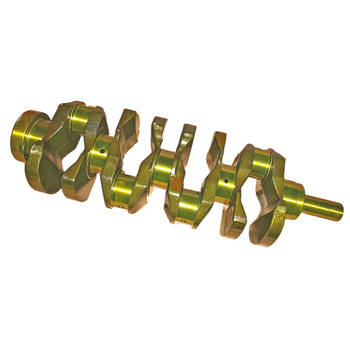
A crankshaft is the backbone of your engine, converting the up-and-down motion of the pistons into rotational energy that powers your vehicle. So, what happens when this crucial component starts to fail? How do you tell if your crankshaft is bad? Ignoring the signs can lead to catastrophic engine damage, so understanding the symptoms is crucial.
Common Symptoms of a Bad Crankshaft
One of the most noticeable signs of crankshaft problems is a loud knocking noise coming from the engine. This knocking, often described as a deep, rhythmic thud, is usually caused by worn crankshaft bearings. These bearings allow the crankshaft to rotate smoothly, and when they wear down, the resulting metal-on-metal contact creates that dreaded knocking sound.
Another common symptom is excessive engine vibration. A bent or damaged crankshaft can cause an imbalance, leading to noticeable vibrations felt throughout the vehicle, especially at higher speeds. Have you noticed your car shaking more than usual? This could be a sign of a bad crankshaft.
Low oil pressure is another red flag. The crankshaft relies on proper oil pressure for lubrication and cooling. A cracked or damaged crankshaft can disrupt oil flow, leading to low oil pressure, which can further exacerbate the problem. Regularly checking your oil pressure gauge is a good habit to develop.
Diagnosing a Bad Crankshaft
While these symptoms can indicate crankshaft problems, they can also be caused by other engine issues. So how do you definitively diagnose a bad crankshaft? A professional mechanic can perform a thorough inspection, which might involve removing the oil pan to inspect the crankshaft bearings and journals for wear and damage. They might also use specialized tools to measure crankshaft runout and check for any bending or warping.
One common diagnostic technique involves using a specialized listening device to pinpoint the source of the knocking sound. This can help differentiate between crankshaft problems and other issues like rod knock or piston slap.
Solutions for a Bad Crankshaft
Unfortunately, there’s no easy fix for a bad crankshaft. In most cases, crankshaft failure requires either a crankshaft replacement or a complete engine rebuild. Crankshaft replacement is a complex and labor-intensive procedure, requiring specialized tools and expertise. Is a full engine rebuild more cost-effective than replacing the crankshaft alone? It depends on the extent of the damage and the age of your engine. A mechanic can help you weigh the pros and cons of each option.
Preventing Crankshaft Problems
While crankshaft failure can sometimes be unavoidable, there are steps you can take to minimize the risk. Regular oil changes with the correct viscosity oil are crucial for maintaining proper lubrication and preventing premature wear of the crankshaft bearings. Addressing low oil pressure promptly can also prevent further damage to the crankshaft.
The Importance of Early Detection
Catching crankshaft problems early is key to minimizing the damage and the cost of repairs. Ignoring the warning signs can lead to more extensive engine damage, potentially resulting in a complete engine failure. Regular maintenance and paying attention to any unusual noises or vibrations can help you identify potential crankshaft issues before they become catastrophic.
Dealing with Crankshaft Failure: What Are Your Options?
So you’ve confirmed you have a bad crankshaft. What are your options? You can choose to have a mechanic replace the crankshaft, rebuild the entire engine, or even replace the engine altogether. This decision will depend on your budget, the age and condition of your vehicle, and the severity of the damage. Discussing your options with a trusted mechanic is crucial at this stage.
When to Seek Professional Help
If you suspect you have a bad crankshaft, don't hesitate to seek professional help. The sooner you address the issue, the less likely it is to escalate into a more costly problem. Remember, a healthy crankshaft is essential for a healthy engine. How do you tell if your crankshaft is bad? By staying vigilant and addressing any unusual symptoms promptly.
Next Steps
If you suspect your crankshaft is bad, schedule an appointment with a qualified mechanic immediately. They can accurately diagnose the problem and recommend the best course of action. Don’t delay – the longer you wait, the more extensive the damage could become. Taking swift action is crucial for protecting your vehicle's engine and avoiding costly repairs down the road.




